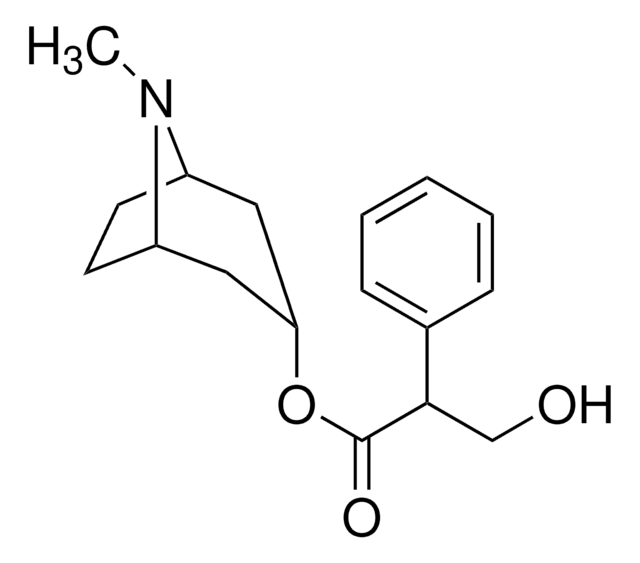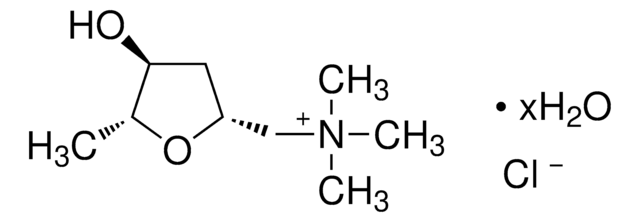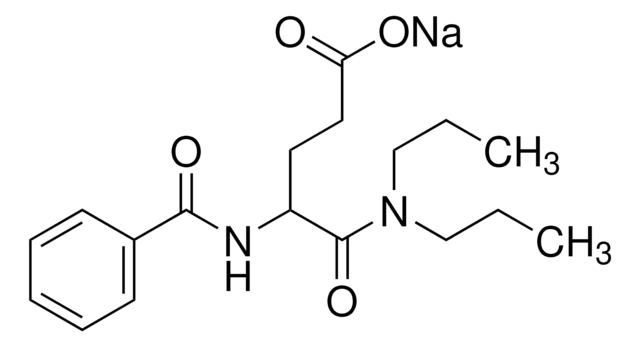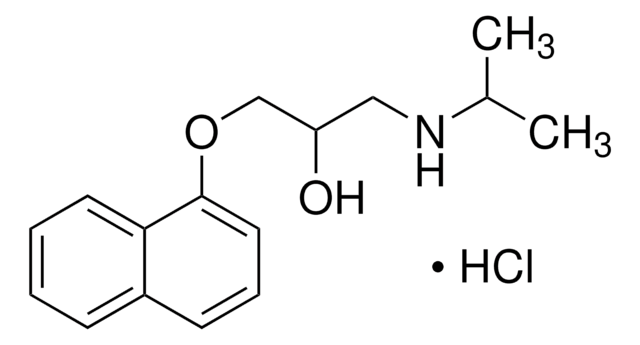A0132
Atropin
≥99% (TLC), powder
Synonym(e):
(±)-Tropintropat, endo-(±)-α-(Hydroxymethyl)-benzolessigsäure-8-methyl-8-azabicyclo[3.2.1]oct-3-ylester, Hyoscyamin
About This Item
Empfohlene Produkte
Assay
≥99% (TLC)
Form
powder
Farbe
white
Löslichkeit
H2O: 2 mg/mL
dilute aqueous acid: soluble
ethanol: soluble
SMILES String
CN1[C@H]2CC[C@@H]1C[C@@H](C2)OC(=O)C(CO)c3ccccc3
InChI
1S/C17H23NO3/c1-18-13-7-8-14(18)10-15(9-13)21-17(20)16(11-19)12-5-3-2-4-6-12/h2-6,13-16,19H,7-11H2,1H3/t13-,14+,15+,16?
InChIKey
RKUNBYITZUJHSG-SPUOUPEWSA-N
Angaben zum Gen
human ... CHRM1(1128) , CHRM2(1129) , CHRM3(1131) , CHRM4(1132) , CHRM5(1133) , LOC730413(730413)
mouse ... Chrm1(12669)
rat ... Chrm1(25229) , Chrm2(81645) , Chrm3(24260) , Drd2(24318) , Htr1a(24473)
Suchen Sie nach ähnlichen Produkten? Aufrufen Leitfaden zum Produktvergleich
Allgemeine Beschreibung
Anwendung
- as a tastant to analyse the bitter taste perception in Drosophila larvae
- as a muscarinic acetylcholine autoreceptors (mAChRs) antagonist to investigate the involvement of individual mAChR subtypes in the control of synapse elimination
- to investigate the pathways of serotonin (5-HT) action in zebrafish hearts
Biochem./physiol. Wirkung
Leistungsmerkmale und Vorteile
Rekonstituierung
Anwendung
Signalwort
Danger
H-Sätze
Gefahreneinstufungen
Acute Tox. 2 Inhalation - Acute Tox. 2 Oral
Lagerklassenschlüssel
6.1A - Combustible acute toxic Cat. 1 and 2 / very toxic hazardous materials
WGK
WGK 3
Flammpunkt (°F)
Not applicable
Flammpunkt (°C)
Not applicable
Persönliche Schutzausrüstung
Eyeshields, Faceshields, Gloves, type P3 (EN 143) respirator cartridges
Analysenzertifikate (COA)
Suchen Sie nach Analysenzertifikate (COA), indem Sie die Lot-/Chargennummer des Produkts eingeben. Lot- und Chargennummern sind auf dem Produktetikett hinter den Wörtern ‘Lot’ oder ‘Batch’ (Lot oder Charge) zu finden.
Besitzen Sie dieses Produkt bereits?
In der Dokumentenbibliothek finden Sie die Dokumentation zu den Produkten, die Sie kürzlich erworben haben.
Kunden haben sich ebenfalls angesehen
Unser Team von Wissenschaftlern verfügt über Erfahrung in allen Forschungsbereichen einschließlich Life Science, Materialwissenschaften, chemischer Synthese, Chromatographie, Analytik und vielen mehr..
Setzen Sie sich mit dem technischen Dienst in Verbindung.







